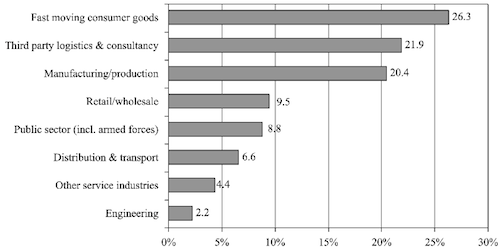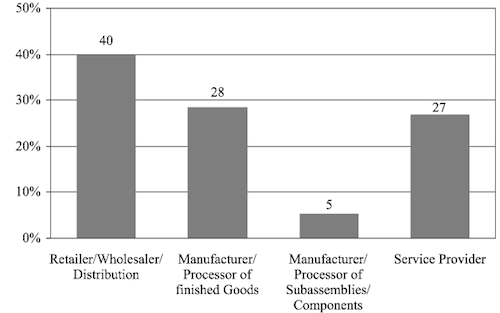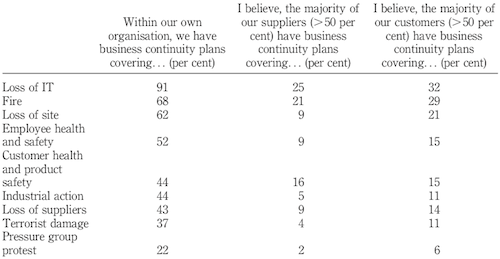Practitioner Views on Supply Chain Risk Management
In 2005 Uta Jüttner was researcher at the Cranfield University, UK, especially renowned for several minds working on supply chain risk management, like Martin Christopher or Denis Towill.
Key in understanding this field of research is to make an inquiry into how supply chain risks are managed in business environments. Jüttner first laid grounds for this by some conceptual work, I introduced here a while ago
Methodology
Jüttner used an exploratory, quantitative survey. They selected 1700 members of the UK Chartered Institute for Logistics and Transport (CILT), with a response rate of 8% 137 managers replied to the survey request.
Furthermore six focus group discussions were held, with seven or eight members.
Those methods were used to answer the following questions:
- How well are supply chain risks recognized across a network?
- What is the current state of practice in SCRM?
- What are the perceived critical issues of SCRM implementation?

Participants
Figure 1 shows the industry of the participants, whereas figure 2 shows the position within the supply chain.

Results
The participants in the focus groups emphasized the importance of the network effects of supply chain risk sources. This importance was also reflected in the survey, where there was a statistically significant correlation between the effects of specific risk sources (like the foot and mouth disease outbreak) and the effect on ones own organization, the suppliers and customers. So those risks are not only affecting one supply chain partner, but often the whole network.
The next analysis focusses on the current state of the practice in SCRM – tools an processes, depth of understanding and business continuity planning. Jüttner concludes:
The findings do not reveal whether this leaning towards less formalised processes and tools is caused by a lack of understanding and/or from a lack of time commitment and discipline emphasised in the following quote. […] The results also show that among the organisations surveyed, a joint approach to managing risks does not seem to be widespread.
The research also reveals some critical issues in supply chains, which can be found in figure 3.

Conclusion
As in many other studies like this one by Zsidisin, Jüttner’s study shows that supply chain risk practices are mostly understood but not very often used. These issues are also reflected in the open research question, with which the article concludes:
- What are the motivators or inhibitors for companies to share risk related information?
- Which risks are accepted by companies as shared supply chain risks?
- How can the risk performance trade-offs in supply chain strategies be analysed and minimised?
- How can the implementation of SCRM processes be organised within and across companies?
Jüttner, U. (2005). Supply chain risk management: Understanding the business requirements from a practitioner perspective The International Journal of Logistics Management, 16 (1), 120-141 DOI: 10.1108/09574090510617385








Comments
GREAT ARTICLE. IT IS QUITE ENLIGHTENING. THANKS
Add new comment